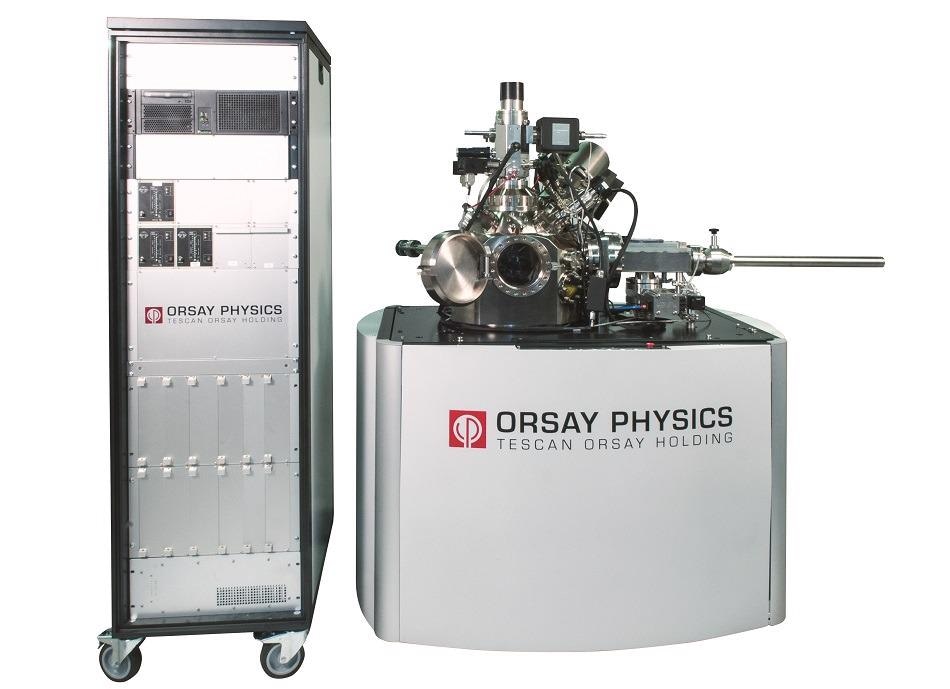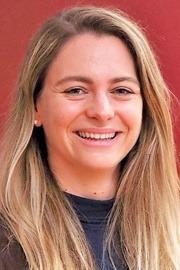The newest addition to the TESCAN portfolio, NanoSpace opens up a new market for TESCAN Group with huge potential to be recognized as a leader in the UHV field.
NanoSpace is best understood as a customizable FIB-SEM instrument working under ultra-high vacuum (UHV) for sample surface analysis. UHV applications use dedicated technology and materials without contaminant inside, ideal for applications where sample surface cleanliness is essential.
Elodie Verzoli is the Product Manager for UHV Solutions, ORSAY PHYSICS (a subsidiary of TOH). She was interviewed on the key features of NanoSpace and why it is an important part of the TOH portfolio.
Why was it important for TOH to acquire NanoSpace and offer UHV solutions?
The current TOH portfolio offers a wide range of high-end solutions for diverse applications, including material science, semiconductors, and life sciences.
NanoSpace allows TESCAN to reach new application spaces such as surface analysis, ion implantation, or previously unreachable niche markets like highly customized requests. Our users are looking for more and more dedicated and unique solutions for their application with correlated technics. NanoSpace is the answer to that.
NanoSpace demonstrates TOH’s adaptability, capability, and wide knowledge acquired within the company while being a great advertisement for TOH as a whole.
Can you describe the key features of UHV NanoSpace?
NanoSpace operates under ultra-high vacuum (UHV), which means a chamber without any contaminants inside.
A vacuum is generally represented by particle density lower than atmospheric pressure, but in our work, the major parameter is not the pressure value obtained. Rather, this is the contamination level measured inside the vacuum chamber in terms of residual gas particles.

The more residual gas molecules are present in the chamber, the more the sample surface will absorb this ‘contamination,’ decreasing analysis quality over time.
The ultra-high vacuum (UHV) range is extremely relevant for any sample surface analysis. In the HV (high vacuum) range - the standard vacuum in SEM and FIB-SEM - a monolayer of residual gas is deposited every four seconds. In the UHV range, however, this value is up to four days.
When working with SIMS (Secondary Ion Mass Spectrometry) analysis, for instance, users are looking to determine the chemical composition of a sample (surface and bulk). UHV helps ensure that the chemical composition obtained is that of the sample and not impacted by contamination from the chamber or any other equipment installed.
Hence NanoSpace is a perfect fit when surface contamination matters the most, especially when applying surface analysis techniques (such as SIMS, AUGER, Atom Probe, …) in the same chamber for correlated analysis especially for 3D tomography measurements using FIB-SEM and an analytical technique.
In this context, NanoSpace is highly customizable, making it ideal for customers with highly specific requirements. In parallel, we are continually working on finding a good balance between customization and standardization for dedicated applications like SIMS, AUGER, or ion implantation while keeping the versatility and flexibility of the NanoSpace concept.
Who is currently using UHV NanoSpace?
NanoSpace has only just started to be rolled out, but it is already looking promising. We are targeting academic laboratories at the moment. Four NanoSpace instruments are currently installed and in operation: three in France and one in the USA. All of these instruments are different in terms of their configurations and application fields: ion implantation, nanoprototyping, and x-ray spectroscopy.

In late 2021, we will be installing the first FIB-SEM-SIMS NanoSpace in France.
We are also working on other exciting projects with high-level researchers, primarily looking at ion implantation and SIMS solutions.
Meanwhile, we are continuing to establish new collaborations worldwide, working with public laboratories and private companies to develop new applications and techniques using NanoSpace.
What is the core potential or advantage of NanoSpace?
Over the coming years, we are anticipating a move towards ‘cleaner’ instruments in a range of applications. We have to be ready to offer these solutions to our customers, and NanoSpace is one such solution.
While the NanoSpace project is led by ORSAY PHYSICS (UHV Centre of Excellence), we have benefited from the knowledge and experience of TESCAN Brno. This product is a great example of joint development within the company, answering pending demands from our customers and positioning TOH as a leader in this market.
What other UHV solutions does TOH have in its portfolio?
ORSAY PHYSICS has been a world leader in the supply of UHV FIB and SEM columns since its creation in the 1990s. We are able to offer any FIBs in the UHV compatibility version and are doing the same with SEMs. Historically, OP has always worked closely with UHV OEMs which is still the case as of today and is developing the end-user part as well. Our UHV knowledge has been acquired for a long time which positions us as a leader in this field.
Being part of TOH is such a big benefit for OP as the UHV business is growing thanks to close collaborations with our worldwide sales channels.
In this domain, we have strong worldwide UHV references from customers, including MIT (USA), Thales (France), Berliner Glas (Germany), NSRRC (Taiwan), KRISS (South Korea), C2N Paris-Saclay University (France) just to quote a few.
What is your role within ORSAY PHYSICS?
As Sales and Marketing Manager, I work with customers worldwide, also working closely with TOH Sales subsidiaries. My work is focused on prospecting for new private and public laboratories, as well as smaller UHV OEMs (Original Equipment Manufacturer).
Because of the highly specialized and dedicated solutions offered by the company, an important part of my role is to define customer needs and the feasibility of what they ask. NanoSpace growth requires extensive investigation in the technical and scientific domains, along with long-term customer relationships and collaborations.
I would say that my scientific background is a real asset because I need to understand and anticipate what researchers want, matching this to available and/or achievable solutions. As part of the TOH Product Management group, my job is to anticipate how NanoSpace will continue to develop over the coming years. The team and I have been preparing NanoSpace business strategic roadmaps, defining what we would need to develop in R&D ahead of the next challenges.
About Elodie Verzeroli
 Elodie Verzeroli has worked at ORSAY PHYSICS for almost seven years, initially starting with two six-month internships in 2013 and 2014 as part of her Master's degree in Physics. She completed a Ph.D. focusing on SIMS ion optics. After her Ph.D., she became the Sales and Marketing Manager at ORSAY Physics, later expanding this role to include UHV Product Manager at TOH.
Elodie Verzeroli has worked at ORSAY PHYSICS for almost seven years, initially starting with two six-month internships in 2013 and 2014 as part of her Master's degree in Physics. She completed a Ph.D. focusing on SIMS ion optics. After her Ph.D., she became the Sales and Marketing Manager at ORSAY Physics, later expanding this role to include UHV Product Manager at TOH.
Disclaimer: The views expressed here are those of the interviewee and do not necessarily represent the views of AZoM.com Limited (T/A) AZoNetwork, the owner and operator of this website. This disclaimer forms part of the Terms and Conditions of use of this website.